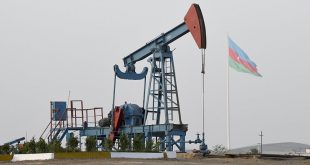The speedy development of modern civilization would be impossible without a major fuel and energy resources such as oil and gas. Azerbaijan is an oil-rich country possessing resources of hydrocarbon raw materials and has the richest history of its development and utilization.
Currently research of the history of Azerbaijan’s oil business is especially a critical issue, as it has deep roots and is saturated, with extraordinary events. In our opinion, in order to correctly employ oil facilities, we should be well aware of the legacy of the oil industry passed on to us. Particularly at that time, there was a deep understanding of the oil business as a branch, which laid the basis for speedy development of technical, chemical and oil-chemical sciences in Baku. Outstanding people of that time
who headed this process, were – Haji Zeynalabdin Taghiyev, the Nobel brothers, Dmitry Mendeleyev,
Konon Lisenko, Musa Naghiyev, Shamsi Asadullayev, Murtuza Mukhtarov, Isabey Hajinsky, Movsumbey Khanlarov, Fatullabey Rustambekov, Konstantin Harichkov, Victor Herr, Lev Gurvich, Vladimir Shukhov, Semyon Kvitko, Konstantin Krasusky and many others. It is worth noting, that the Russian oil industry up to 1910 was represented, basically, by the Azerbaijan (Baku) oil industry. Balakhany, Sabunchi, Romany, Bibiheybat and Surakhani were among the major oil fields of the Baku oil region.
In antique times, it was known that oil existed and had been used, first of all, for lighting purposes, and also as a fuel. Places of oil extraction had been sacred and called naphtha (nephtoi), whence the name oil followed. Greek thinkers Herodotes (485 – 425 up to B.C.), Plutarch (50 a.c.) and Roman Dioskorid (I century of a.c.) in their writings described the oil fields and their applications.
The first data on oil extractions from the Absheron (Apsheron peninsula) can be found written in old Albanian sources of VII century a.c. Numerous, authentic data about early oil well extractions during VIII-XIII centuries on the Absheron peninsula were found in Arabian sources – in the works of scientists – Baladzori, Masudi, Istakhri-Abu, Abu-Dulaf, Mohammed Bekran. In such a way, Masudi in his writing “Book of the middle” (first half of the X century) points out, that “… In Baku there were two main sources: yellow and white,
- and black and dark blue oil, which were Incomes from each source made 1000 dirham’s, that is, about 250 rubles a year”.
The largest oil wells in the Absheron were situated near the settlements of Balakhani, Surakhani, Bibi- Heybat, Sabunchi, Romani, Shubani and Binagadi. The known geologist, professor Melchior Neumayer in his book “History of the Earth” (S.-Petersburg, 1898) emphasized, that “… the curious satellite of Baku oil is the gases coming from under the ground; during the former times at Surakhani they gave the rise to sacred fires around which huge crowds of Indian worshipers gathered”.
Indeed, in VI century B.C. there were temples of fire-worshipper in Absheron (in the settlements of Shubani, Surakhani, on Pirallahi island), in which inextinguishable sacred fires coming to the surface were burning. In XVIII and in the beginning of XIX centuries a.c. fires were supported by priests of old Iranian sects “parses” from which there was (until now) a well kept temple “Ateshgah” in Surakhani. (Parses, gebrs- a nationality of the Iranian tribe, followers of Zoroastr religion. Those, pursued in Persia for their religion, Zoroastrians, started to move to India following the collapse of the empire of Sasani in VII century a.c. In
Bombay, parses made a significant class of the population for their wealth and social status. According to a census in 1921, their number was about 102 thousand in India and about 10 thousand in Persia).
Surakhani’s white oil was considered the best medical treatment, and it hit the shelves of markets in Persia, Bukhara, India and Moscow. This was testified in notes of the known Venetian traveler, the first European who visited the Caucasus, Marko Polo (1254-1324) which would be published after centuries in France (“ Le livre de Marco Polo “, Paris, 1865).
The history is saturated with examples of the use of oil in military work – this was approved by: Carthaginian commander Gannibal (246 – 183 b.c), ancient Roman scientist Pliny the Elder (23 – 79 a.c.), and others. Oil was a part of a so-called “Greek fire” (a mix of saltpeter, sulfur and oil), which was successfully used during wars in ancient and Middle Ages: “fire” was burning on the water’s surface setting fire to the enemy vessels…
After 1870 the universal industry of oil extraction started in the Russian empire and abroad with simultaneous developments of research in oil chemistry and oil technology. A huge role in extensive research of oil and oil products played by brilliant works and inventions of chemists and technologists of different countries such as – D. Mendeleyev, A. Butlerov, F. Beylshteyn, K. Rayhenbah, K. Shorlemmer, K. Engler, V. Markovnikov, V. Ogloblin, Yu. Lermontova, K. Lisenko, A. Letny, A. Nikiforov, V. Shukhov, S. Kvitko, W. Barton, L. Gurvich and others.
However, the beginning for the industrial use of oil was after the invention of the cracking-process.
First developed by Vladimir Shukhov (1891) and later, by William Barton (1913) the bases of thermal cracking-process, enabled the transformation of high-molecular hydrocarbons into low-molecular hydrocarbons; after detailed studies of the features of the cracking-process about half of the extracted oil was processed into petrol fractions. Later, the cracking process was used by the creation of a method of catalytic hydrogenising of saturated hydrocarbons formed by splitting oil.
Here it worth to note, that though research on the development of thermal decomposition of oil was carried out at earlier times, in the 1890’s (in Russia by Alekseyev, and others and in England by Dyuar, etc.), in particular Bakuvian Semyon Kvitko in 1912 developed a new way of thermal decomposition of the oil residue. He patented this invention a year before the American Barton, whose industrial realization was carried out only in 1925. Even before World War I, the naval ministry, was assuming to use S. Kvitko’s invention, however the war prevented the implementation of the envisaged plan.
It’s worth emphasizing, that the essential contribution to the technology of high-temperature processing of Baku oil has been by N. Zelinsky, S. Vishetravsky, S. Lebedev, A. Dobryansky, F. Inchik, K. Harichkov, R. Vishin, and others, whose works at the same time promoted a new direction in the chemistry of oil – petrochemical synthesis. The Baku branch of the Imperial Russian Technical Society (founded on 24th of
March, 1879), which became the center of scientific research of oil on the Caucasus.
Author: Miryusif Mirbabayev
Source: Concise history of Azerbaijani oil
 Oval Useful news from Azerbaijan and Caucasus
Oval Useful news from Azerbaijan and Caucasus


